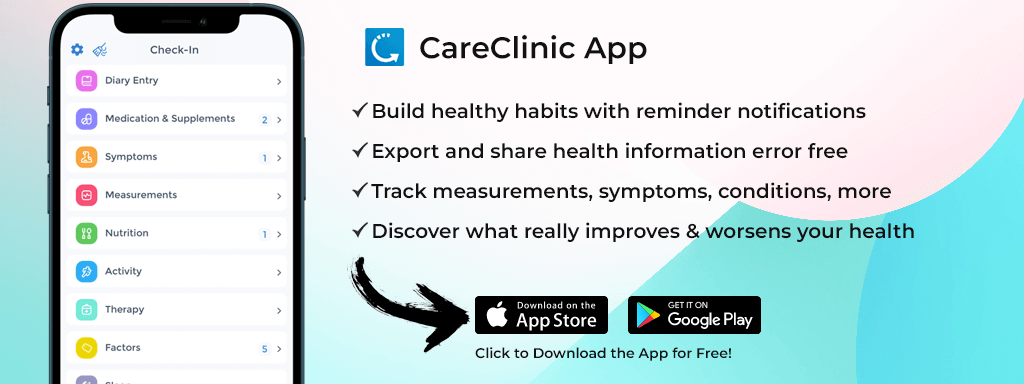 Sjögren's syndrome attacks moisture-producing glands throughout the body, creating a complex web of symptoms that change daily. Daily tracking reveals patterns between dry eyes, joint pain, fatigue, and environmental triggers. CareClinic App provides structured monitoring that turns scattered symptoms into actionable insights for managing flares.
Sjögren's syndrome attacks moisture-producing glands throughout the body, creating a complex web of symptoms that change daily. Daily tracking reveals patterns between dry eyes, joint pain, fatigue, and environmental triggers. CareClinic App provides structured monitoring that turns scattered symptoms into actionable insights for managing flares.
Quick Takeaways
- Track multiple body systems simultaneously - Monitor dry eyes, mouth dryness, joint pain, and fatigue using separate symptom categories rated 1-10 daily to identify which systems flare together during disease progression cycles over 4-6 weeks.
- Document trigger correlations with environmental factors - Record weather changes, stress levels, medication timing, and sleep quality alongside symptom severity to identify 60-80% of flare triggers within 2-3 months of consistent tracking data.
- Create medication effectiveness profiles - Rate symptom improvement 2-4 hours after taking treatments like artificial tears, immunosuppressants, or pain relievers to build personalized effectiveness charts showing which medications work best for specific symptom combinations.
Multi-system autoimmune diseases need complete tracking because symptoms interact across different organs. Joint pain worsens when eyes are particularly dry, or brain fog correlates with sleep disruption from mouth dryness. CareClinic App captures these connections through structured daily monitoring that reveals your unique symptom patterns. Download CareClinic Today to begin tracking today.
Table of Contents
- Why Track Sjögren's Syndrome Symptoms Daily?
- How Do I Set Up Multi-System Tracking in CareClinic?
- What Specific Data Should I Track for Each Symptom?
- How Do I Track Fatigue and Cognitive Symptoms?
- What Environmental and Lifestyle Factors Should I Monitor?
- How Do I Track Treatment Effectiveness?
- Sjögren's Symptom Pattern Recognition Examples
- Sjögren's Monitoring Skills Assessment
- Sjögren's Symptom Tracking 6-Week Protocol
- Sjögren's Tracking Obstacles and Solutions
- When should a symptom tracker be used?
- Mistakes that are commonly made while logging symptoms
- Ways CareClinic becomes different
- Take Control of Your Sjögren's Management Today
Why Track Sjögren's Syndrome Symptoms Daily?
The immune system's attack on moisture-producing glands creates unpredictable symptom cycles. Random bad days actually follow patterns when you track symptoms consistently. Morning stiffness predicts afternoon fatigue, or weather changes trigger dry eye flares 24-48 hours later.
Specific data is needed by rheumatologists to adjust treatments effectively. Less insight is provided by saying "I'm tired and achy" than by documenting "joint stiffness was rated 7/10 from 6-10 AM, was improved to 4/10 after morning medication, eye dryness was peaked at 8/10 during afternoon computer work, was managed with artificial tears every 30 minutes." Treatment decisions are guided by this precision.
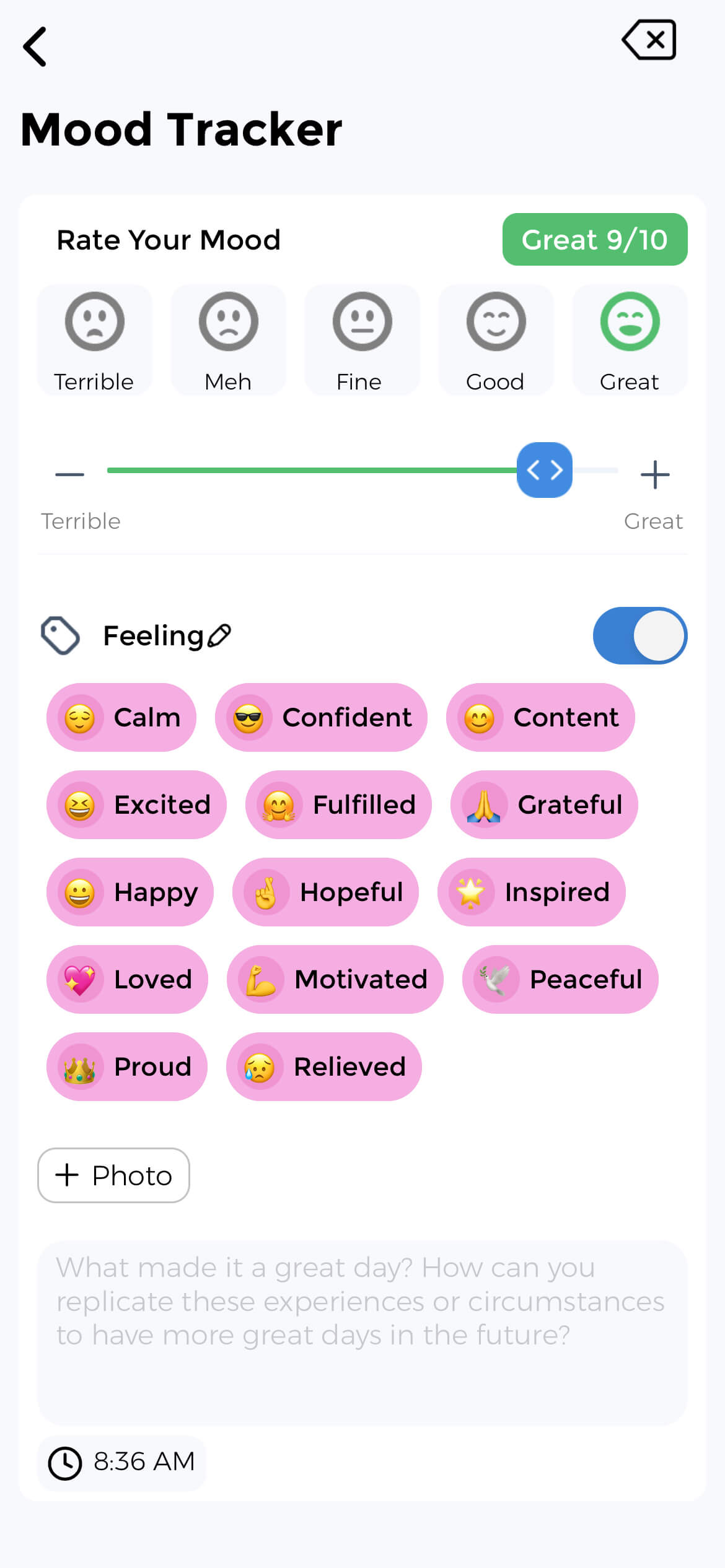
Benefits of Daily Sjögren's Tracking
- Flare Prediction: Identify early warning signs that precede symptom escalation
- Treatment Optimization: Document which medications work best for specific symptoms
- Trigger Identification: Discover environmental or lifestyle factors that worsen symptoms
- Healthcare Communication: Provide doctors with detailed symptom progression data
- Quality of Life Monitoring: Track functional improvements or declines over time
How Do I Set Up Multi-System Tracking in CareClinic?
Multiple organ systems need organized tracking to capture the full scope of Sjögren's symptoms. This complete monitoring framework takes 15 minutes to set up in the CareClinic App.
Step 1: Configure Primary Symptom Categories
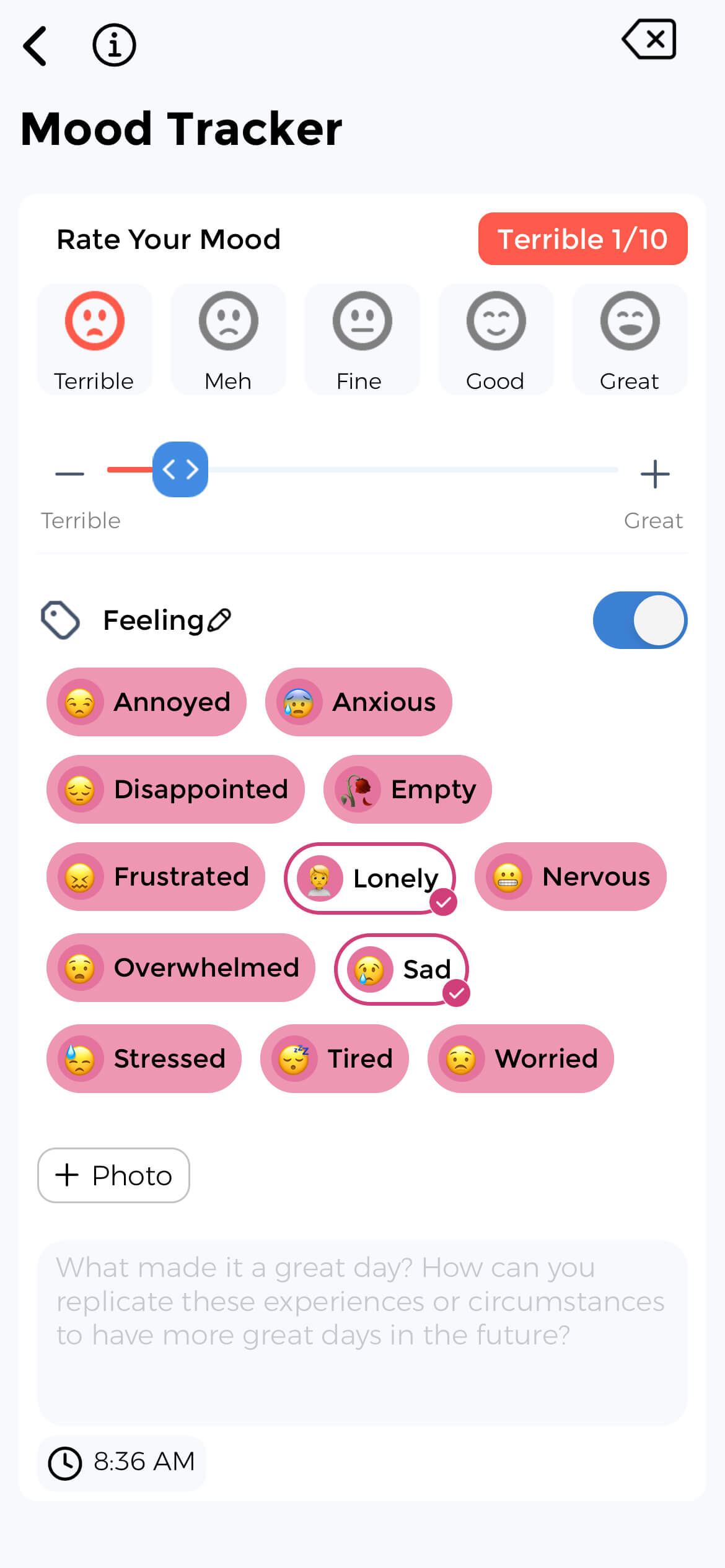
Separate symptom entries should be created for each affected system in CareClinic's Symptom Tracker. Complex symptoms are prevented from being oversimplified into single ratings that miss important details about condition progression when this approach is used.
Essential Sjögren's symptom categories include:
- Eye Dryness: Rate severity 1-10 with notes about burning, grittiness, or vision changes
- Mouth Dryness: Track saliva production, swallowing difficulty, and dental issues
- Joint Pain/Stiffness: Document specific joints affected and morning versus evening patterns
- Fatigue: Separate physical exhaustion from mental fog or cognitive issues
- Skin Dryness: Monitor rashes, itching, or unusual skin changes
- Muscle Pain: Track widespread aches versus localized muscle soreness
Step 2: Enable Environmental Tracking
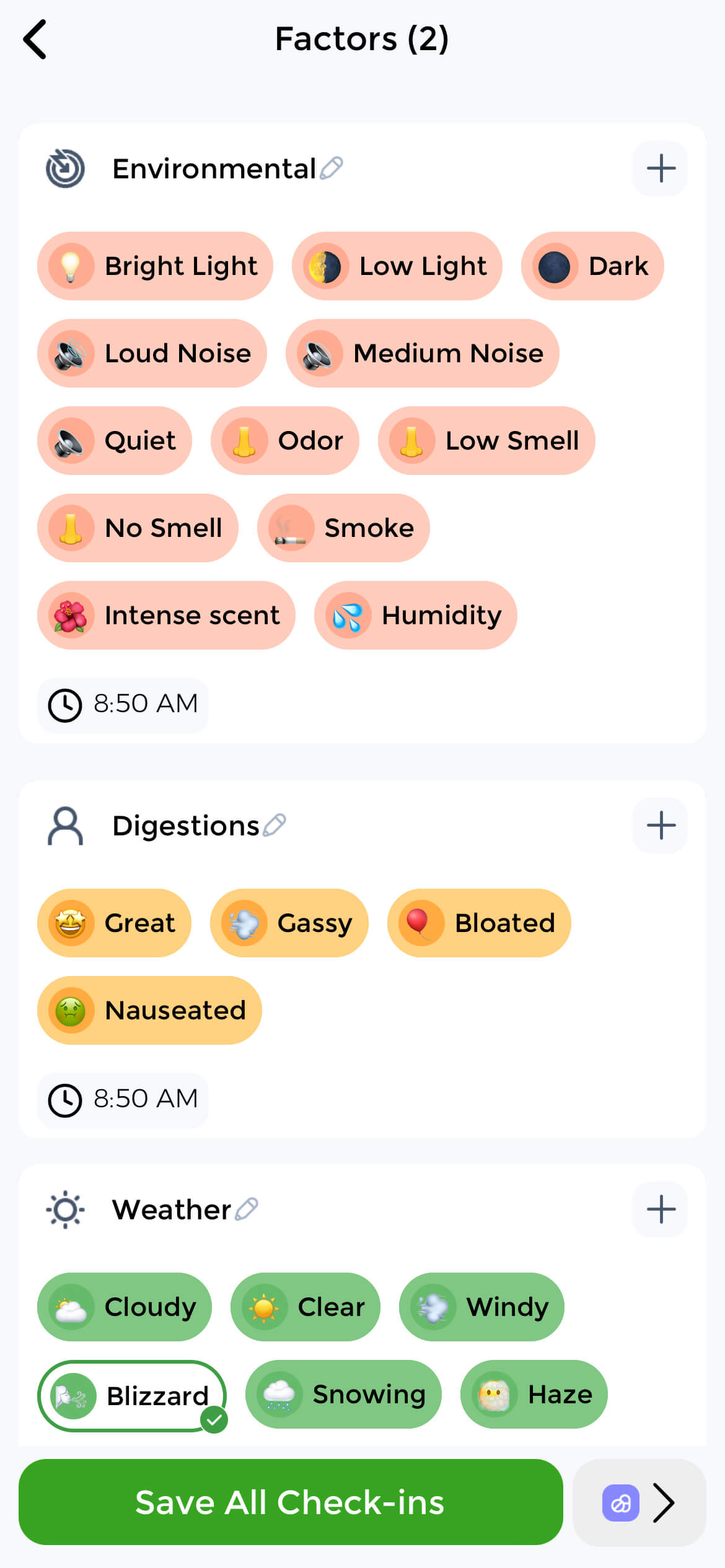
Environmental factors significantly impact Sjögren's symptoms. Low humidity, air conditioning, wind, or screen time can trigger dry eye flares, while stress or lack of sleep might worsen inflammation and fatigue levels.
CareClinic's Notes feature should be used to document daily environmental conditions alongside symptom ratings. This correlation data helps triggers to be identified that might not be consciously noticed but that consistently affect symptoms. For complete autoimmune tracking, CareClinic's rheumatoid arthritis tracking system which shares similar multi-system monitoring approaches should be considered.
CareClinic Advantage: Multi-Factor Correlation
Unlike basic symptom diaries, CareClinic's correlation features allow environmental factors to be automatically linked with symptom severity scores. Weather data, stress levels, and medication timing can be viewed alongside symptom graphs to reveal hidden patterns that manual tracking would miss.
What Specific Data Should I Track for Each Symptom?
Effective symptom monitoring allows health trends to be interpreted with precision that guides treatment adjustments.
Effective Sjögren's monitoring captures symptom intensity and functional impact together. Rating pain as "7/10" needs context about how it affects daily activities or sleep quality.
Eye Symptoms Tracking Protocol
Eye symptoms in Sjögren's are varied throughout the day based on humidity, screen use, and artificial tear timing. Multiple aspects should be tracked to allow personal patterns to be understood:
- Dryness Severity: Rate 1-10 scale upon waking, midday, and evening
- Burning/Grittiness: Document sensation type and duration
- Vision Changes: Note blurriness, light sensitivity, or focusing difficulty
- Treatment Response: Time and effectiveness of artificial tears or medications
- Activity Impact: Reading, computer work, or driving limitations
- Environmental Triggers: Wind, air conditioning, low humidity exposure
Joint and Muscle Symptom Documentation
Sjögren's joint symptoms are differentiated from rheumatoid arthritis but can be equally limiting. Specific patterns should be tracked to help distinguish disease activity to be distinguished from other conditions:
- Morning Stiffness Duration: Minutes from waking until normal mobility
- Pain Location: Specific joints affected (hands, knees, shoulders)
- Pain Quality: Aching, sharp, burning, or throbbing sensations
- Movement Impact: Activities that worsen or improve symptoms
- Weather Correlation: Barometric pressure or humidity changes
- Medication Timing: Pain levels before and after anti-inflammatory drugs
How Do I Track Fatigue and Cognitive Symptoms?
Sjögren's fatigue goes beyond normal tiredness to overwhelming exhaustion that rest doesn't resolve. Brain fog affects concentration, memory, and word-finding abilities, significantly impacting daily functioning.
Fatigue Assessment Framework
Physical fatigue should be separated from cognitive symptoms to allow better understanding of how daily life is affected by each. Treatments can be targeted more effectively by healthcare providers when this distinction is made.
Physical fatigue tracking includes:
- Energy Level: Rate 1-10 at morning, afternoon, and evening
- Activity Tolerance: How much activity triggers exhaustion
- Recovery Time: Hours needed to recuperate after minimal exertion
- Sleep Quality: Restfulness despite adequate sleep duration
Cognitive symptom monitoring covers:
- Concentration: Ability to focus on tasks or conversations
- Memory Issues: Short-term memory problems or word-finding difficulty
- Mental Clarity: Mental sharpness versus "foggy" thinking
- Processing Speed: Time needed to understand or respond to information
What Environmental and Lifestyle Factors Should I Monitor?
Environmental conditions and lifestyle factors strongly influence Sjögren's symptoms. Daily tracking reveals which external factors consistently trigger flares, enabling proactive management strategies.
Key Environmental Triggers
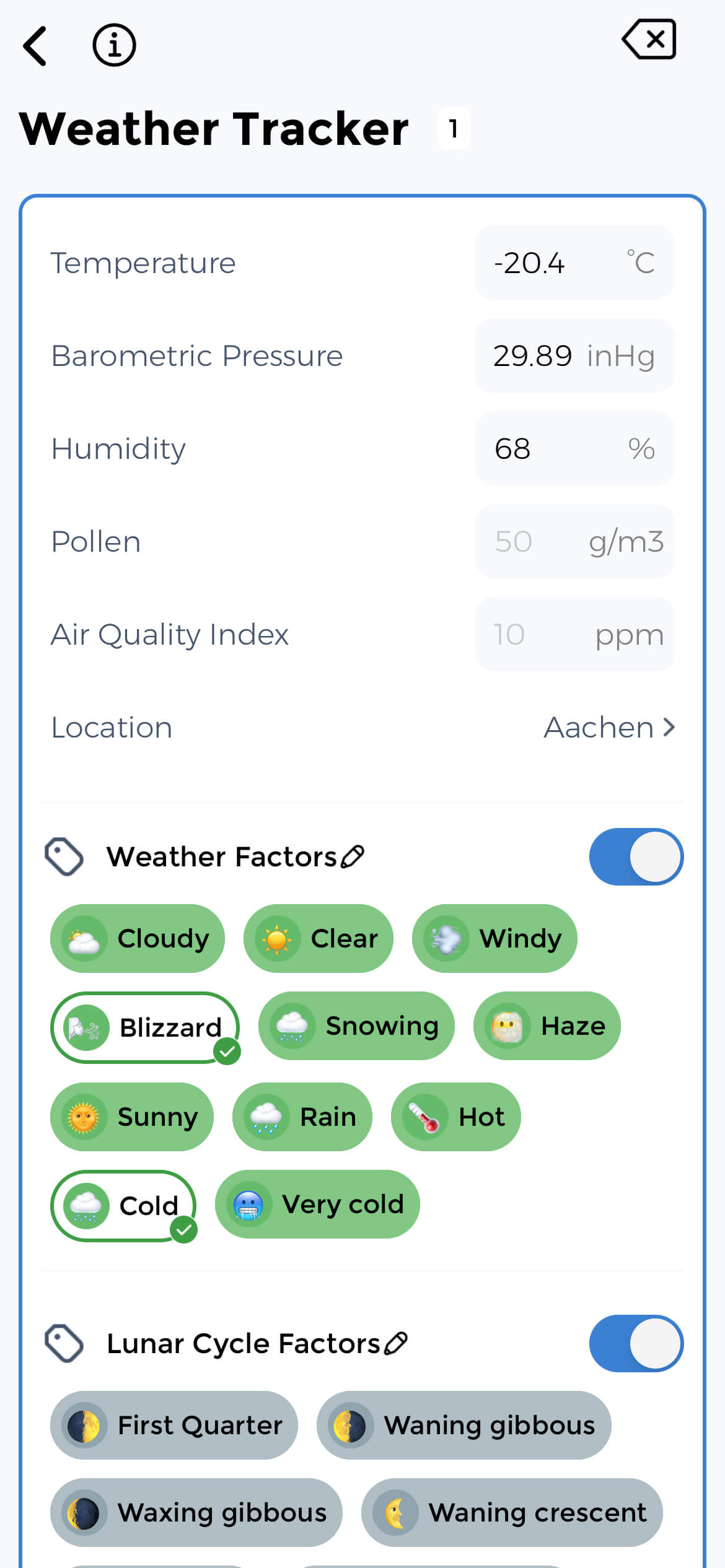
Document environmental conditions alongside symptom ratings to identify correlations that might not be immediately obvious. Weather changes, indoor air quality, and seasonal factors can significantly impact symptom severity.
Environmental factors to track include:
- Humidity Levels: Indoor and outdoor humidity affecting mucous membranes
- Air Quality: Pollution, allergens, or irritants in your environment
- Temperature Changes: Rapid weather shifts affecting joint symptoms
- Screen Time: Computer or device use increases eye dryness
- Air Conditioning/Heating: Artificial climate control drying effects
- Sleep Environment: Bedroom humidity, temperature, or air circulation
Lifestyle Factor Correlations
Stress, diet, exercise, and sleep significantly influence autoimmune disease activity. Track these factors consistently to understand their impact on your Sjögren's symptoms.
Lifestyle tracking elements:
- Stress Levels: Work, family, or health-related stress ratings 1-10
- Sleep Quality: Duration, restfulness, and nighttime symptom interruptions
- Physical Activity: Exercise type, intensity, and post-activity symptom changes
- Dietary Patterns: Foods that seem to worsen inflammation or symptoms
- Hydration: Water intake affects body moisture levels
How Do I Track Treatment Effectiveness?
Sjögren's treatments work differently for each person and their effectiveness changes over time. Daily medication and treatment tracking identify what works best for your specific symptom profile.
Medication Response Monitoring
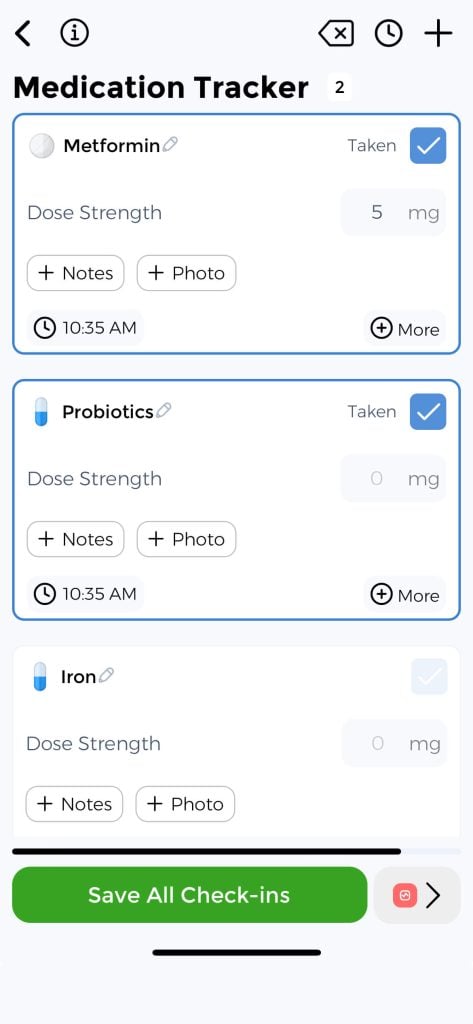
Use CareClinic's medication tracker to document not just when you take treatments, but how your symptoms respond. This data proves invaluable when discussing treatment adjustments with your healthcare team.
Track medication effectiveness by documenting:
- Dosage and Timing: Exact amounts and when medications were taken
- Symptom Improvement: Which specific symptoms improved and by how much
- Duration of Relief: How long benefits lasted before symptoms returned
- Side Effects: Any negative reactions or unwanted effects
- Combination Effects: How medications work together versus individually
Common Sjögren's treatments to monitor include artificial tears, prescription eye drops, saliva stimulants, immunosuppressive drugs, and anti-inflammatory medications. CareClinic's medication tracking system should be used to maintain detailed records of dosages, timing, and effectiveness for each treatment.
Data Export for Healthcare Providers
Comprehensive reports can be generated from tracked data to share with healthcare teams. The export feature allows symptoms, medications, and environmental factors to be compiled into PDF reports that clearly show disease progression over time.
Export Options Available:
- PDF Reports: Professional summaries can be generated for doctor visits with graphs and trend analysis
- CSV Files: Raw data can be exported for detailed analysis or integration with other health systems
- Date Range Selection: Specific time periods can be chosen to focus on recent changes or long-term patterns
- Data Privacy: All exports are generated locally and can be password-protected for secure sharing
Sjögren's Symptom Pattern Recognition Examples
Understanding how to apply daily tracking becomes clearer through realistic scenarios that demonstrate the connections between symptoms, triggers, and treatments in daily life.
Example 1: Morning Flare Pattern
Day 1: Woke with joint stiffness 8/10, eye dryness 6/10, and mouth dryness 7/10. Took morning medications at 7 AM. By 9 AM: joint pain decreased to 5/10, eye symptoms unchanged, mouth slightly improved to 6/10. The weather was humid (70%). Conclusion: joints respond well to morning medication, but eye symptoms need additional intervention during high humidity.
Example 2: Screen Time Correlation
Tracked for two weeks: computer work days averaged eye dryness 7.5/10 by evening, versus non-computer days averaging 4/10. Artificial tears used every 30 minutes during screen time versus every 2 hours on non-work days. Pattern identified: blue light and reduced blinking significantly worsen dry eyes. Solution implemented: computer glasses and hourly eye break reminders.
Example 3: Seasonal Trigger Discovery
Three-month tracking revealed fatigue levels consistently spiked during low barometric pressure days (storms approaching). Average fatigue 8/10 on pressure-drop days versus 5/10 on stable weather days. Joint pain also increased from average 4/10 to 7/10. Weather app integration helped predict difficult days for proactive symptom management.
Sjögren's Monitoring Skills Assessment
Question 1: How many body systems should you track simultaneously for complete Sjögren's monitoring?
A) 2-3 primary systems
B) Only the most bothersome symptoms
C) All affected systems (eyes, mouth, joints, fatigue, skin)
D) Just joint and eye symptoms
Question 2: What's the most important timing for tracking medication effectiveness?
A) Once daily at bedtime
B) Before and after each dose
C) Only when symptoms are severe
D) Weekly summaries
Question 3: How long should you track consistently before identifying reliable patterns?
A) 1-2 weeks
B) 4-6 weeks
C) 3 months
D) 6 months
Answers: 1-C, 2-B, 3-B
Sjögren's Symptom Tracking 6-Week Protocol
Week 1-2: Set up basic symptom tracking for eyes, mouth, joints, and fatigue
Week 3-4: Add environmental factors and medication response monitoring
Week 5-6: Include lifestyle correlations and begin pattern analysis
Success Criteria:
- Track at least 4 symptom categories daily
- Document medication timing and effectiveness
- Record environmental conditions that affect symptoms
- Identify 2-3 personal trigger patterns
Reward: Share your tracking insights with your rheumatologist and develop a personalized management plan based on your unique patterns!
Sjögren's Tracking Obstacles and Solutions
Problem: Too many symptoms to track consistently
Solution: Start with your three most bothersome symptoms and add one new category each week. Use voice-to-text features for quick daily entries. Focus on patterns rather than perfection in early tracking stages.
Problem: Symptoms seem random with no clear patterns
Solution: Extend tracking to 8-10 weeks before analyzing patterns. Include weather data and stress levels in correlations. Sometimes patterns emerge over longer timeframes, particularly with autoimmune disease cycles.
Problem: Forgetting to track during symptom flares
Solution: CareClinic reminders should be set up during typical high-symptom times. Quick-rating systems should be used instead of detailed entries during flares. Retroactive tracking within 24 hours can still be used to provide valuable pattern data.
For additional guidance on managing complex conditions, condition-specific guides are available to help optimize your tracking approach.
When should a symptom tracker be used?
Symptom trackers should be used daily for chronic conditions like Sjögren's syndrome. Morning tracking captures baseline symptoms before medications take effect. Evening entries document how symptoms progressed throughout the day. Consistency in tracking times allows accurate pattern detection over weeks and months.
Mistakes that are commonly made while logging symptoms
Common tracking mistakes include rating symptoms only when severe, forgetting to document medication timing, and using vague descriptions instead of specific scales. Incomplete entries are often made during flares when tracking matters most. Environmental factors are frequently overlooked despite their significant impact on symptom severity.
Ways CareClinic becomes different
CareClinic differentiates itself through multi-system tracking capabilities designed for complex conditions. Unlike basic health apps, symptom correlations can be tracked across different body systems simultaneously. Medication effectiveness profiles are built over time. Healthcare provider reports are generated with professional formatting for clinical use.
Take Control of Your Sjögren's Management Today
Sjögren's syndrome creates daily challenges that feel overwhelming without a tracking system. But documented patterns reveal that even complex autoimmune symptoms follow predictable cycles. Every rating you record, every trigger you identify, and every medication response you document builds a roadmap for better disease management.
Your tracking data becomes the foundation for informed treatment decisions. Rheumatologists can adjust medications based on real effectiveness data. You can anticipate difficult days and prepare appropriate interventions. Most importantly, you can see concrete evidence of improvement when chronic illness makes progress feel impossible.
The CareClinic App turns the chaos of multi-system symptoms into organized insights that guide your healthcare journey. Download CareClinic Today and start building your personalized Sjögren's management strategy through daily symptom monitoring.
Remember: Autoimmune diseases are complex, but tracking reveals simplicity within the complexity. Every data point you collect is an investment in better symptom control and improved quality of life. Your future self will thank you for starting this monitoring journey today.

